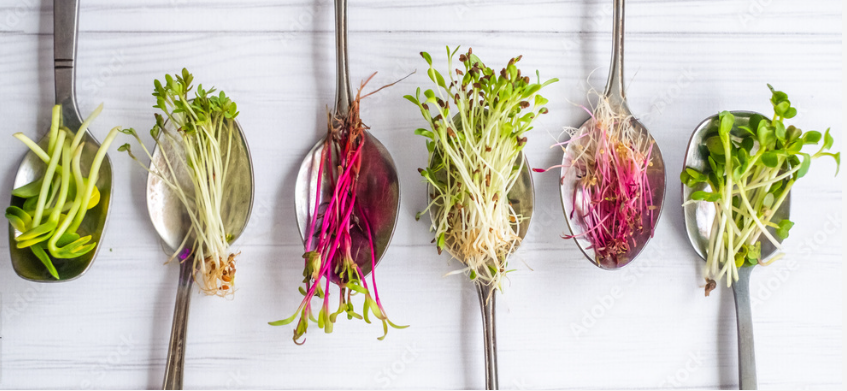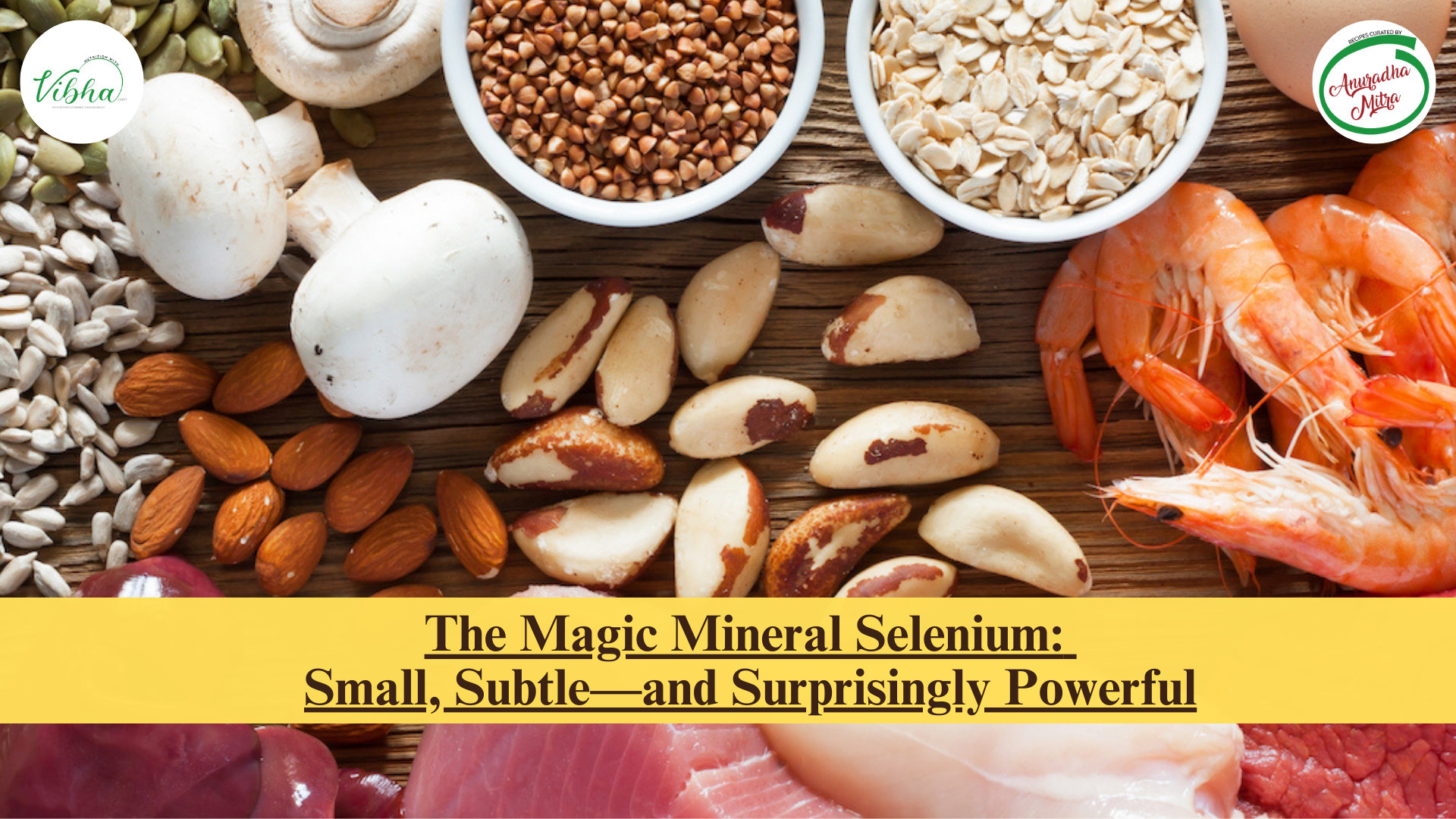Microgreens: A Sustainable Solution for Modern Nutrition
In a fast-paced world where health and sustainability are becoming increasingly vital, microgreens emerge as a shining beacon of nutritious and eco-conscious eating. These tiny, vibrant greens are packed with flavor, nutrients, and the promise of a sustainable food future. In this blog, we’ll explore the world of microgreens, their benefits, their role in modern nutrition, and how they can help combat comorbidities while contributing to a more sustainable world.
What Are Microgreens?
Microgreens are the young, edible seedlings of various vegetables, herbs, and grains. They are harvested at an early stage, typically when they are just a few inches tall, making them a mini nutritional powerhouse. What sets microgreens apart is their intense flavor, vivid colors, and impressive nutrient content. Common varieties include broccoli, kale, spinach, basil, and radish microgreens.

Sustainability: A Growing Concern
In today’s world, sustainability is no longer a buzzword; it’s a necessity. Traditional agriculture often has a hefty environmental footprint, including excessive water usage, pesticide contamination, and long transportation distances. Microgreens offer a sustainable alternative for several reasons:
- Minimal Space Requirements: Microgreens can be grown in small spaces, including urban apartments and balconies, reducing the need for large agricultural plots.
- Reduced Water Usage: They require significantly less water compared to mature plants, making them more environmentally friendly.
- Short Growth Cycle: Microgreens grow quickly, often ready for harvest within 7-21 days, reducing the energy and resources needed for cultivation.
- Local Production: Growing microgreens at home or in local urban farms can eliminate long transportation distances, reducing carbon emissions.
- Reduced Food Waste: With microgreens, you can harvest what you need, reducing food waste. Unlike mature vegetables, which may spoil before consumption, microgreens stay fresh until you’re ready to use them.
- Soil Conservation: Microgreens can be grown hydroponically or in soil, reducing the need for large tracts of arable land and preserving soil health.
- Year-Round Cultivation: Indoors or in controlled environments, microgreens can be grown year-round, lessening the dependence on seasonal produce and long-distance transportation.
Here’s a list of seeds that can be grown as microgreens at home, along with a basic process for growing them:
- Radish: Radish microgreens are known for their peppery flavor and vibrant red or purple stems.
- Sunflower: Sunflower microgreens have a mild, nutty flavor and are rich in nutrients like vitamin E.
- Pea: Pea microgreens have a sweet, fresh flavor and are a good source of protein and fiber.
- Mustard: Mustard microgreens have a spicy kick and add a unique flavor to dishes.
- Coriander leaves (Cilantro): Cilantro microgreens have a fresh, citrusy flavor and are great for Mexican and Asian dishes.
- Arugula (Gargeer): Arugula microgreens have a peppery taste and are a popular choice for salads and sandwiches.
- Beet: Beet microgreens have a mild, earthy flavor and vibrant red or pink stems.
- Spinach: Spinach microgreens have a mild, spinach-like flavor and are rich in vitamins and minerals.
- Basil: Basil microgreens have a strong, sweet flavor and are perfect for making pesto.
- Broccoli: Broccoli microgreens have a mild, slightly peppery taste and are packed with nutrients.
- Fenugreek: Fenugreek microgreens have a slightly bitter, nutty flavor and are known for their potential health benefits.
- Amaranth: Amaranth microgreens have a mild, earthy flavor and are rich in vitamins and minerals.
- Kale: Kale microgreens have a mild, slightly peppery taste and are exceptionally nutritious.
- Chia: Chia microgreens are known for their gel-like texture when soaked and are high in omega-3 fatty acids.
There can thus be many Microgreens that you can grow. If there is a seed, it will sprout and you can harvest the young plants to create a dish. So, think creatively and use garden cress (Halim) seeds, fennel seeds, ajwain, or any of the millets or pulses.
Process of Growing Microgreens at Home:
1. Choose Your Container: Select a shallow container or tray with drainage holes. You can use seed trays, shallow pots, or even recycled containers like plastic salad boxes.
2. Prepare the Growing Medium: Fill the container with a suitable growing medium like potting mix, coconut coir, or a mix of soil and compost. Make sure it’s loose and well-draining.
3. Sow the Seeds: Sprinkle the microgreen seeds evenly over the surface of the growing medium. You can sow them densely but avoid overcrowding.
4. Cover and Water: Gently press the seeds into the growing medium and lightly cover them with a thin layer of soil. Water the seeds thoroughly using a spray bottle or a gentle stream of water.
5. Provide Light: Place the container in a location with indirect sunlight or use a grow light. Microgreens don’t need full sun but require good light for healthy growth.
6. Maintain Moisture: Keep the growing medium consistently moist but not waterlogged. Mist the surface regularly to keep it damp.
7. Harvest: Microgreens are typically ready for harvest in 7-21 days, depending on the variety. Use scissors to snip the greens just above the soil level when they reach the desired height.
8. Enjoy: Use your freshly harvested microgreens in salads, sandwiches, smoothies, or as garnishes in various dishes to enjoy their vibrant flavors and health benefits.
Happy growing your own little farm!
Benefits of Microgreens
Microgreens offer a wide range of benefits that make them a valuable addition to your diet:
- Nutritional Powerhouses: Microgreens are concentrated sources of essential vitamins, minerals, and antioxidants. They often contain higher nutrient levels than their mature counterparts.
- Rich in Fiber: Fiber aids digestion, supports gut health and helps regulate blood sugar levels.
- Flavor Enhancers: Microgreens add a burst of flavor and freshness to dishes, making them a delightful addition to salads, sandwiches, and wraps.
- Low in Calories: They provide nutrients without a significant calorie load, making them suitable for weight-conscious individuals.
- Customization: You can choose the microgreens that best suit your nutritional needs and personal preferences, from spicy radish to earthy beet greens.
Techniques for Using Microgreens in Different Recipes
Now that you know the benefits of microgreens, let’s explore some techniques for incorporating them into various dishes:
- Salads: Microgreens make a fantastic addition to salads. Their vibrant colors and flavors can elevate even the simplest salad to gourmet status.
- Sandwiches and Wraps: Replace lettuce or spinach with microgreens in your sandwiches and wraps. They add a crisp texture and extra nutrition.
- Smoothie Boost: Blend microgreens into your morning smoothie for an extra nutrient boost without altering the taste significantly.
- Garnish: Use microgreens as a garnish for soups, omelets, and other cooked dishes. They add visual appeal and a burst of flavor.
- Microgreen Pesto: Create a unique pesto sauce by blending microgreens, nuts, garlic, olive oil, and Parmesan cheese. Use it as a pasta sauce or a flavorful spread.
Microgreens for your very own Indian Recipes
Indian cuisine is known for its rich and diverse flavors. Here’s how microgreens can be incorporated into traditional Indian recipes:
- Paratha: Add finely chopped microgreens like fenugreek, cilantro, or spinach to the paratha dough for a nutrient-packed twist on this classic Indian bread.
- Chutney: Create a zesty chutney by blending microgreens with coconut, green chilies, and spices. This vibrant condiment pairs perfectly with dosas or idlis.
- Tadka: Enhance the flavor of your dals and curries by adding a handful of microgreens during the tempering process. Mustard microgreens, in particular, can provide a unique kick to your dishes.
- Raita: Stir microgreens into yogurt to make a refreshing and nutritious raita. Try using mint or coriander microgreens for an extra burst of flavor.
- Chaat: Sprinkle microgreens on your favorite chaat recipes, such as bhel puri or sev puri, for an added layer of freshness and nutrition.
- Incorporating microgreens into your Indian dishes not only elevates the taste but also boosts their nutritional content, making your meals healthier and more flavorful..
Again, there are myriad ways to incorporate. From salads to raitas to cutlets to dal to mixed vegetables ( root vegetables like potato, sweet potato, yam, colocadia) pair up well with Microgreens. Add it to idlis, dhoklas, chillas, smoothies, and omelets. It adds zest to the dish, has great taste, and is a powerhouse of nutrients.
Comorbidities and the Role of Microgreen Cultivation
As we battle various comorbidities such as obesity, diabetes, and heart disease, the role of nutrition becomes increasingly critical. Microgreens can play a pivotal role in improving health outcomes:
- Diabetes Management: Some microgreens, like fenugreek and broccoli, have been shown to help regulate blood sugar levels.
- Heart Health: Microgreens are rich in heart-healthy nutrients like potassium, magnesium, and antioxidants, which can support cardiovascular health.
- Weight Management: Incorporating microgreens into your diet can provide the necessary nutrients to keep you feeling full and satisfied, reducing the urge for unhealthy snacks.
Conclusion
Microgreens are more than just a culinary trend; they are a sustainable solution to our modern nutritional challenges. They offer a vibrant and nutritious addition to our diets while addressing the urgent need for environmentally conscious food choices. By embracing microgreens and experimenting with different recipes, we can take a significant step towards a healthier, more sustainable future.
So, why not start cultivating your own microgreens today and reap the benefits of this small but mighty addition to your diet? Your health and the planet will thank you.
At Nutritionwithvibha, we’re here to support you on your journey towards sustainable and nutritious eating.
Write to us for a consultation on growing your Microgreens, for the management of your health, and to prevent disease.
Stay Nourished
Stay Blessed.





